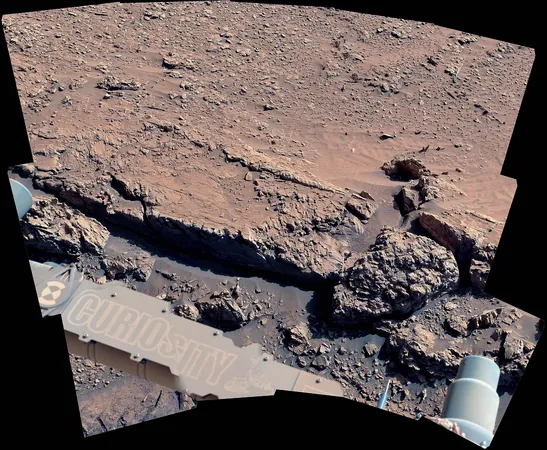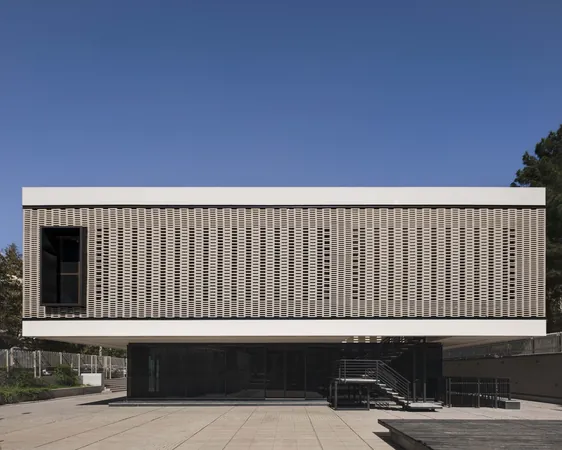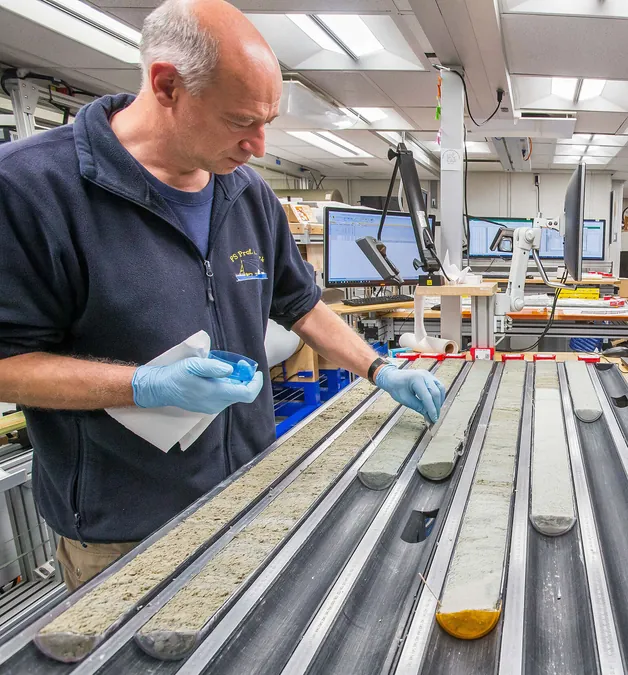
Unveiling Mars: Mysterious Ridges Point to a Puzzling Past
2025-06-29
Author: Nur
NASA's Mars Curiosity rover has recently touched down on a fascinating patch of Martian terrain, unveiling bizarre rock formations known as "boxwork patterns." These intricate crisscrossing ridges are unlike any previously documented on the Red Planet, sparking a flurry of questions about Mars' enigmatic history.
Once a vibrant world with rivers, lakes, and even possibly an ocean, Mars has since transformed into the arid desert we see today. However, new evidence suggests that water may have persisted underground long after the surface water disappeared.
Delving into the Boxwork Patterns
At the Jet Propulsion Laboratory (JPL), scientists are closely examining these distinctive boxwork formations in Gale Crater—the rover's original landing site and its exploration zone. Although the lakes in Gale Crater had long dried up by the time this area formed, it appears that groundwater was still active beneath the surface.
Curiosity has uncovered short, intersecting ridges that geologists believe emerge when minerals accumulate in rock fractures caused by subterranean water flow. Over time, high winds on Mars eroded the softer surrounding rock, leaving behind the robust, cement-like ridges that stretch for miles along the slopes of Mount Sharp.
The Mystery of Hardened Ridges
These broken-curb-like ridges raise intriguing questions: Why are they hardened into these unique patterns and why do they exist only in this specific area? Curiosity project scientist Ashwin Vasavada emphasizes the importance of further study to confirm how these formations came to be.
Layers of Mars' Climate History
Mount Sharp is composed of successive rock layers, each encapsulating a chapter of Mars' climatic evolution. As Curiosity ascends, it's akin to traversing through time, from wetter conditions at the base to increasingly dry periods above.
Currently, the rover is traversing a layer rich in magnesium sulfates—salty minerals that hint at evaporation processes. But the latest findings have introduced another twist: the bedrock between the boxwork ridges showcases a unique chemical composition, with bright white streaks of calcium sulfate, a mineral associated with water evaporation.
Abigail Fraeman, Curiosity's deputy project scientist, expressed surprise at the return of these calcium sulfate veins, which had previously become scarce at higher elevations. This unexpected discovery prompts excitement within the team as they work to uncover the reasons for their re-emergence.
Searching for Signs of Life
To unravel the enigma, Curiosity drilled into a rock named "Altadena" on June 8, collecting powder for thorough chemical analysis. Scientists aim to compare the chemical properties of this new terrain with those of older layers.
Future drilling efforts will target areas featuring the prominent boxwork patterns, as these samples may harbor evidence of organic molecules or remnants of ancient life—a tantalizing prospect for researchers.
Mapping Mars Like Never Before
Curiosity isn't just gathering data; it's also reshaping its map. Each region explored gets a nickname to assist scientists in tracking distinct features. While the naming theme previously drew inspiration from nearby areas in Southern California, it has now shifted to honor Bolivia's Salar de Uyuni, the world's largest salt flat, and regions of Chile's Atacama Desert—two of Earth's driest locales often studied for their relevance to Martian conditions.
Unanswered Questions About Mars' Legacy
With every new ridge and sample, compelling questions arise: Why do these boxwork patterns only manifest in this location? What accounts for the resurgence of calcium sulfate veins at this altitude? And what insights do these mineral signatures provide about the final days of water on Mars?
As Curiosity continues its exploration, each discovery brings us one step closer to deciphering the secrets of Mars’ past—and perhaps revealing what life the Red Planet may have harbored.





 Brasil (PT)
Brasil (PT)
 Canada (EN)
Canada (EN)
 Chile (ES)
Chile (ES)
 Česko (CS)
Česko (CS)
 대한민국 (KO)
대한민국 (KO)
 España (ES)
España (ES)
 France (FR)
France (FR)
 Hong Kong (EN)
Hong Kong (EN)
 Italia (IT)
Italia (IT)
 日本 (JA)
日本 (JA)
 Magyarország (HU)
Magyarország (HU)
 Norge (NO)
Norge (NO)
 Polska (PL)
Polska (PL)
 Schweiz (DE)
Schweiz (DE)
 Singapore (EN)
Singapore (EN)
 Sverige (SV)
Sverige (SV)
 Suomi (FI)
Suomi (FI)
 Türkiye (TR)
Türkiye (TR)
 الإمارات العربية المتحدة (AR)
الإمارات العربية المتحدة (AR)